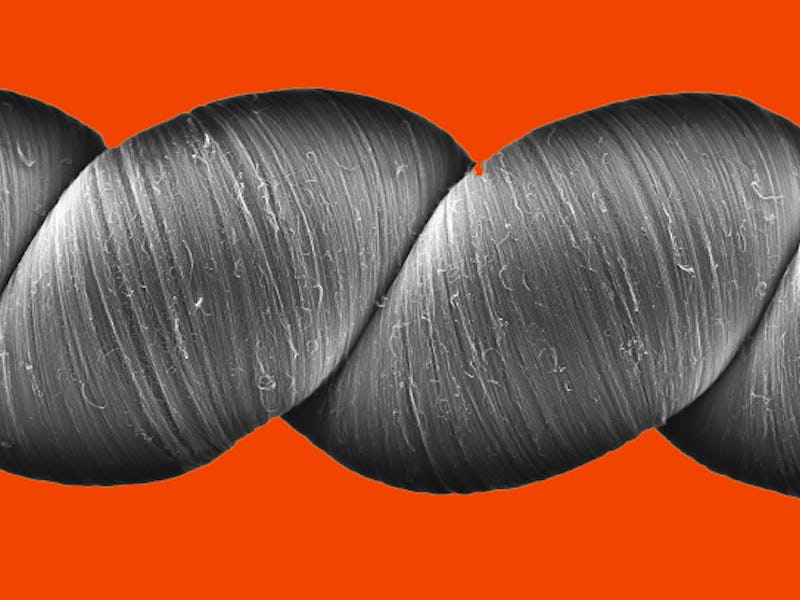Energy-Creating Yarn Could Be Used in 'Smart Clothing'
This yarn charges when twisted.

Although constant threats of an energy crisis fill the news these days, there’s also a ton of different research groups looking to develop innovative ways for us to generate electricity. The latest development is a yarn made from nanotubes that generates electricity when it is twisted or stretched.
In new results published in the latest issue of Science, an international group of researchers demonstrates how this new “twistron” yarn — 10,000 times smaller in diameter than a human hair — could perhaps usher in a new way of making internet of things devices run, as well as potentially scaling up the technology to generate water through the motion of the ocean or rapid changes in temperatures.
Carter Haines, an engineer at the University of Texas at Dallas and a co-author of the new study, describes how the breakthrough was after 15 years of work, in which “all our previous attempts in the lab” to create an energy-harvesting lightweight material “really didn’t work that well.”
The carbon nanotube yarn
The twistron, which can be twisted up “like sheep’s wool,” says Haines, “is something we’ve been wanting to do for a while, but we finally stumbled on a solution that works.”
The new material works by essentially generating electricity out of mechanical energy — which in this case is basically the stretching of the yarn. The carbon nanotube yarns are coated with an electrolyte material (like table salt and water) which charges the yarn up when it’s twisted or stretched. That voltage, then stored in the yarn, harvests electricity.
Stretching a twistron yarn 30 times will produce about 250 watts per kilogram of peak electrical power. That’s about one-third of a single horsepower or “about four old-school bulbs working at the same time,” Haines tells Inverse.
Dr. Carter Haines, Dr. Shi Hyeong Kim, and Dr. Nai Li of UT Dallas are lead authors of a study that describes carbon nanotube yarns that generate electricity when they are stretched or twisted.
Although this material can generate electricity for conventional materials, Haines and his team specifically think the yarn would be useful for powering IoT device components, like sensor nodes. About 31 milligrams of yarn can send 2 kilobyte data packets out every 10 seconds over 100 meters.
This could go a long way in making IoT devices more useful to consumers. “You don’t have to plug them into the wall,” says Haines, “and you don’t have to change the batteries all the time.” The flexible yarn would especially help in textile IoT devices, such as smart clothing fitted with breathing sensors.
“For small scale applications, we already have a pretty interesting edge on things,” says Haines.
Of course, there’s also some potential for the yarn to one day help generate enormous amounts of energy if the researchers figure out a way to make the production less expensive. Thick ropes of yarn could theoretically be used to generate electricity from something like ocean waves. But the researchers will need to conduct a lot of work in making the yarn cheaper to produce and augmenting the power efficiencies.
If the researchers manage to overcome the aforementioned obstacles, the new yarn could be one component of major game-changing technologies that change how we think about electricity generation.